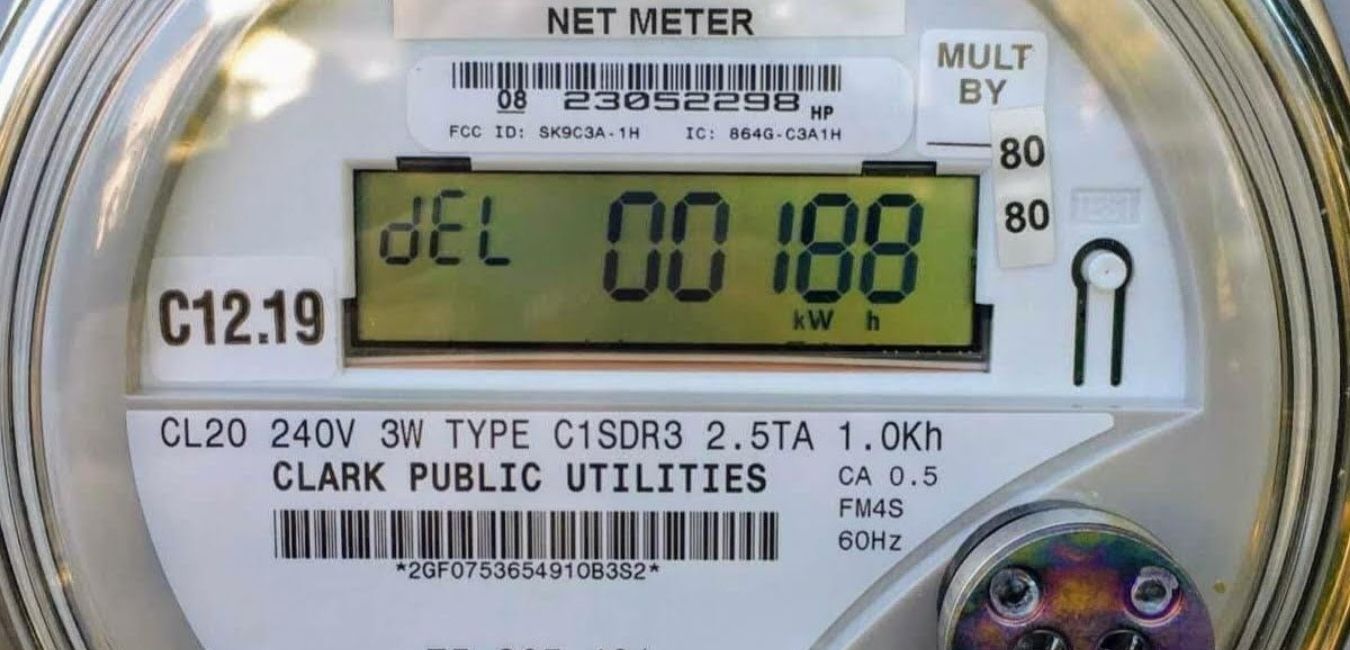Most of us are aware of the tremendous environmental benefits of solar power harnessed by solar panels. Experts install solar energy systems, and they supply your home with all the power it can, and then the rest is supplemented by traditional power from your local electric company. By doing so, your electricity bills become significantly reduced.
But what happens if you have excess power? In other words, if the generated power from your solar panels exceeds the amount of renewable energy that your home consumes, what happens to that power? It might sound strange, but your meter reading can move in the opposite direction. In essence, you “sell” your home’s excess energy back to the utility companies.
Let’s look at how this process works and even how you can both cover your costs and then make a little bit of cash with your new solar system.
Electric Meter Runs Backwards with Solar Power
The question of whether your meter can run backward with solar power depends very much on your electric company. You enter an arrangement with them called net energy metering.
As with other uses of the word “net,” such as net income or net worth, this is a total at the end of each month that considers how much energy you consumed and how much you gave back.
If the total energy consumed is less than the total energy generated, your electric company will either write you a check or credit your account for a future overage.

Why Does This Arrangement Make Sense for the Energy Company?
Simply put, energy is expensive, and most power companies don’t produce their own. They serve as middlemen, buying the power from a company that does generate it and then supplying it at an upcharge to the consumer.
What is more, it isn’t cheap. That’s one of the reasons power companies love this arrangement. They’re getting a good deal. They’re repurchasing the excess power from you instead of needing to buy it from major manufacturers supplying fossil fuel-based energy or even wind energy. You are providing competition that helps keep those prices manageable.
Energy companies in mainly sunny areas are especially keen to enter into these kinds of arrangements. If it’s sunny most of the day where you live, you’re almost guaranteed to generate more power than you consume.
For complicated economic reasons that we won’t bore you with now, the more suppliers a company has, the better. If they have to rely on a single producer for all their energy needs, that producer can essentially charge whatever it wants because it has a monopoly, and that’s not good for anyone.
Not Ready to Speak With A Consultant? Get An Instant Estimate WIthin Minutes
Enter your zip code to begin:
How Does It Work?
Unfortunately, not every solar system can be used in this manner. Essentially, your solar system has to be designed to be two-way, not only flowing to your home but also away from your home. If the energy company in your area isn’t participating in such a program, you’re out of luck.
You’ll need a solar PV installer and a smart meter for your meter to run backward. The standard electricity meters on most homes now aren’t capable of having the meter run backward in this way.
Luckily, though, when you have your PV (photovoltaic) system installed, it can include a net meter that can spin backward as you send power to the grid rather than take energy from it.

What is a FIT Payment?
FIT, in solar power lingo, stands for Feed-In Tariff. This is kind of the name of the payment that the electric company makes to you for your contribution of energy to the grid.
However, it’s a bit more complicated than that. As you might know from your high school history course, a tariff is a tax on foreign goods, so it might seem odd that it’s called this, but it’s mainly because you’re a small-scale provider or generator.
Essentially, in most places in the United States, the government encourages its citizens to switch to green energy sources. The federal, state, and sometimes even local governments incentivize making changes that help reduce your overall carbon footprint and impact on the environment, as well as theirs.
For example, sometimes you get a nice tax break for buying an electric car. Installing solar panels and using the sun’s energy to power your home is another example of going green that the government loves.
Therefore, the power company buys your excess energy back from you at an above-market price. That means that they pay you more money for your power than they pay their major suppliers.
Why? Once again, it’s part of the government’s attempt to incentivize green energy. It helps them comply with international treaties and agreements on reducing greenhouse gases and damaging practices, and it’s good for the overall economy.
Read More:
How Do You Know Whether You’re Generating More Power than You Consume?
With digital metering, it can be effortless to see whether you’re generating more power than you consume or whether you’re currently paying for your energy. These meters send information to the power company digitally, rather than having someone come out and read them.
That means that you can log in to your account and see where you stand more frequently than just once a month.
It will also be easy to see when you receive your bill. If this is a program in which you want to participate, talk to your solar installer from the beginning. Make sure they understand that you wish to install a PV system capable of not only powering your whole home but also generating some extra too.
Can I Store My Excess Energy?
Typically no, but we’re getting there. Storing excess energy would require you to purchase enormous batteries, similar to those that power electric vehicles, only much larger. The extra energy would charge the batteries and then use them when necessary.
Currently, the excess power generated by your home solar system flows back to the power supplier, so in a way, they store your extra energy for you and redeliver it when solar power isn’t available.
The world of energy is changing rapidly, and new developments are happening all the time. It will be fascinating to see what new directions the sun will take us when it comes to powering our lives.
Read More:
Find Out Much Solar With Save You
Finding out how your meter will backward isn’t as straightforward unless using technology to help estimate your potential solar production. At Sunbridge, we have an easy-to-use solar calculator where it only takes a few minutes to complete.
Just put in your zip code to get started:
Not Ready to Speak With A Consultant? Get An Instant Estimate WIthin Minutes
Enter your zip code to begin:


